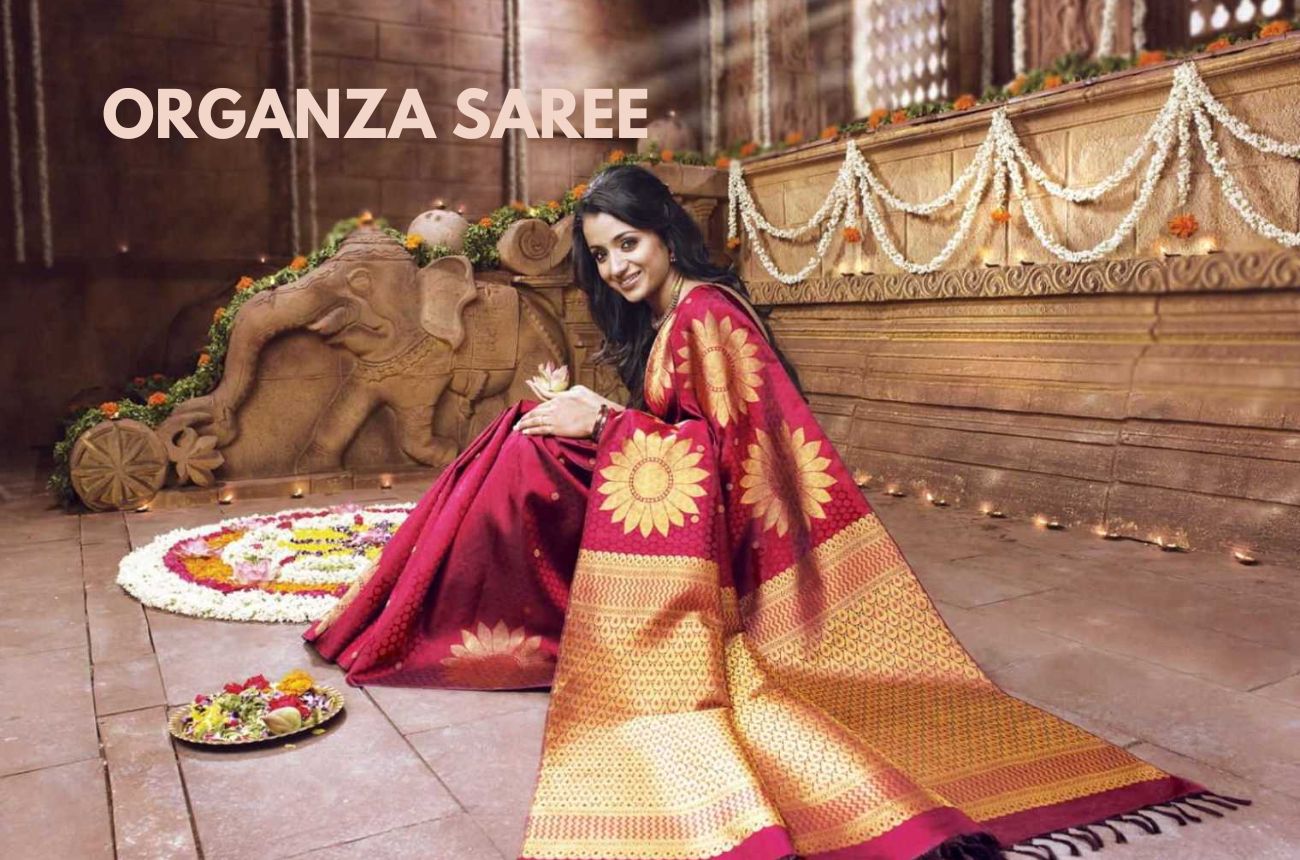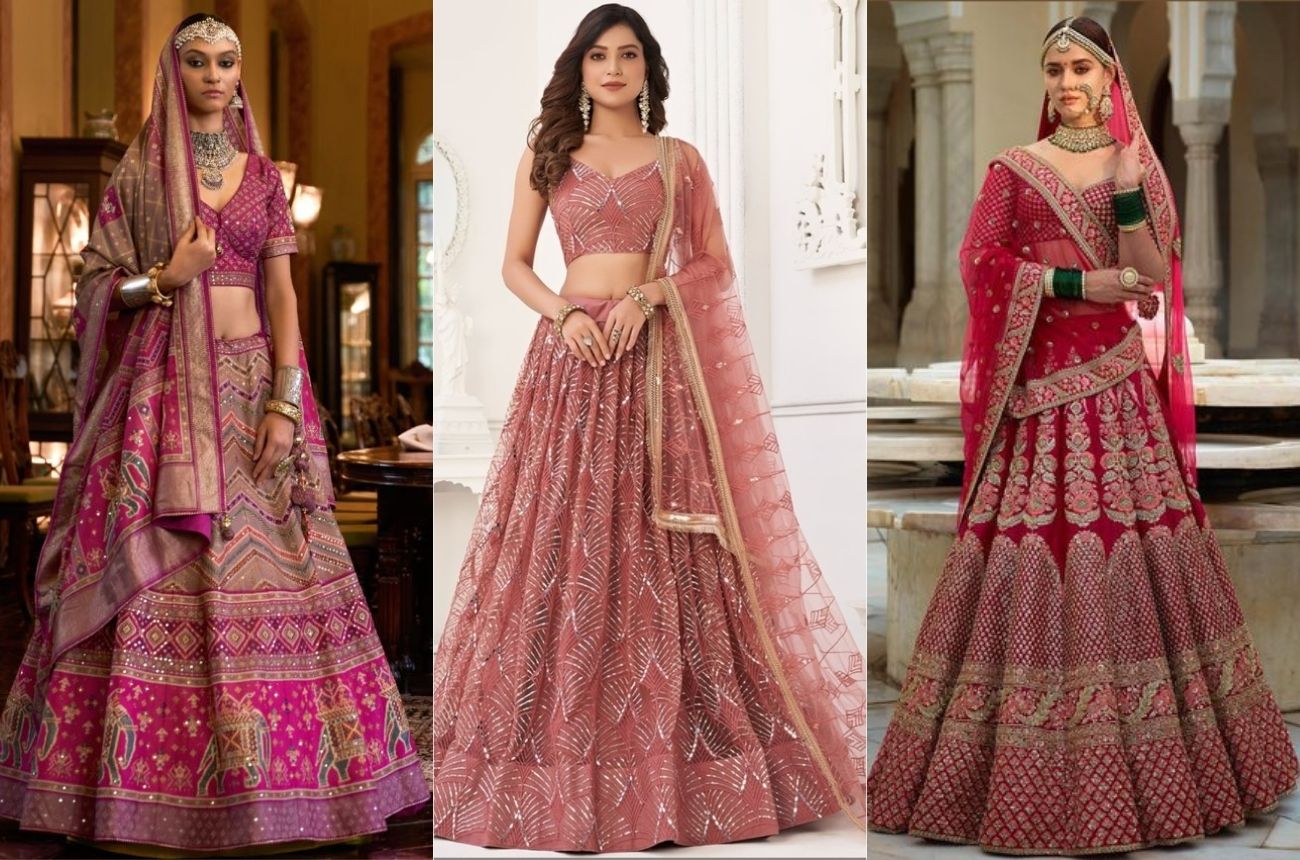Indian fashion is renowned worldwide for its vibrant colours, intricate designs, and rich cultural heritage. The attire worn in India reflects the country’s diverse traditions, customs, and regional influences. Among the various elements of Indian fashion, dresses hold a significant place, showcasing a wide array of styles, fabrics, and craftsmanship techniques.
Outline Table for Long-Form Article on Types of Indian Dresses
| Heading | Subheading |
| Introduction | Overview of Indian fashion and significance of traditional attire |
| Importance of Indian Dresses | Cultural significance and diversity of Indian attire |
| Sarees | Different types, fabrics, and regional variations |
| Salwar Kameez | Styles, designs, and cultural contexts |
| Lehenga Choli | Bridal wear, ceremonial significance, and variations |
| Anarkali Suits | History, resurgence, and contemporary styles |
| Kurtis and Tunics | Modern trends, fusion wear, and versatile styling |
| Sherwani and Achkan | Traditional men’s attire for weddings and formal occasions |
| Dhoti Kurta | Regional variations, historical significance, and styling |
| Bandhgala Jackets | Evolution, formal wear, and contemporary adaptations |
| Patiala Suit | Cultural roots, Punjabi influence, and modern interpretations |
| Indo-Western Fusion Dresses | Blend of Indian and Western styles, popularity, and trends |
| Traditional Embroidery and Embellishments | Intricate designs, craftsmanship, and cultural symbolism |
| Fabrics Used in Indian Dresses | Silk, cotton, chiffon, georgette, and their characteristics |
| Styling Tips and Fashion Accessories | Matching jewelry, footwear, hairstyles, and makeup |
| Conclusion | Recap of the diversity and richness of Indian dress culture |
Importance of Indian Dresses
Indian dresses carry immense cultural significance and are deeply rooted in tradition. They serve as a reflection of India’s cultural diversity and heritage, with each garment telling a unique story of its origin and evolution. From the graceful sarees of South India to the elegant sherwanis of the North, Indian dresses symbolise tradition, grace, and timeless beauty.
Sarees
ALSO READ : Traditional Look on Sarees: How to Style Sarees for a Traditional Look
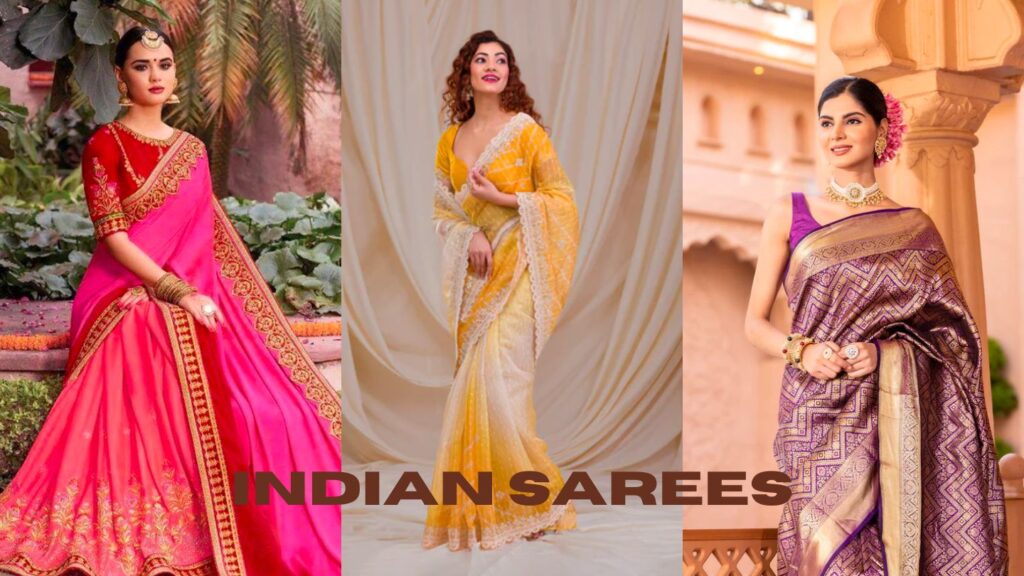
Wrapped in cultural allure, the saree stands as an emblem of Indian tradition, embodying grace and sophistication. Adorning women throughout the diverse landscapes of India, each locale unveils its distinctive flair and method of draping. From the resplendent silk drapes of Kanjeevaram to the ethereal chiffon weaves of Bengal, the kaleidoscope of textures and patterns knows no bounds.
Salwar Kameez
ALSO READ : Simple Salwar Suit Designs: Timeless Elegance and Comfort
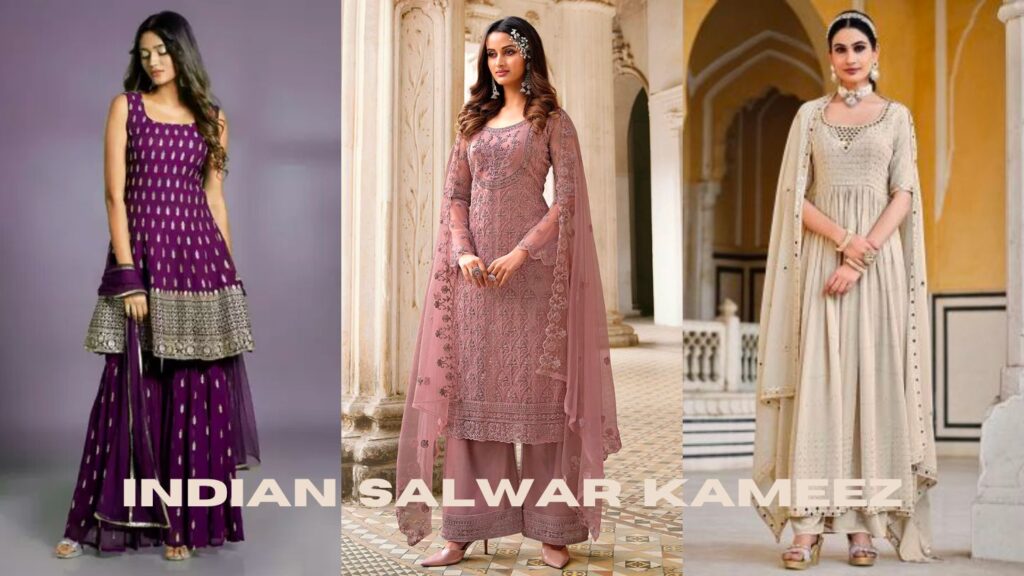
Salwar Kameez is another popular Indian dress worn by women, especially in North India and Pakistan. It consists of a long tunic (kameez), paired with loose-fitting trousers (salwar) and a dupatta or scarf. The salwar kameez comes in various styles, ranging from simple everyday wear to intricately embroidered ceremonial attire.
Lehenga Choli
ALSO READ : Finding the Perfect Wedding Dress for Your Body
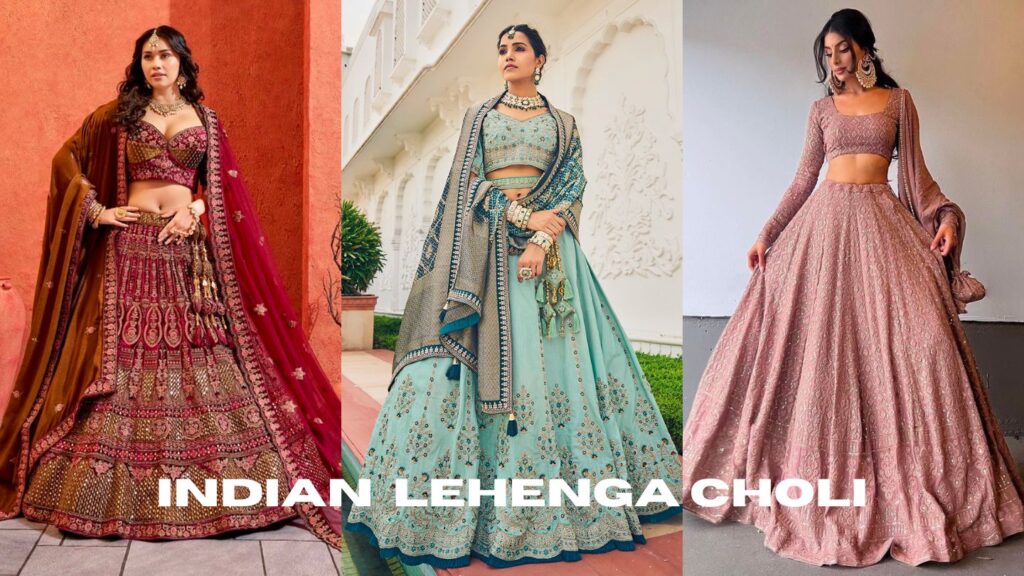
The Lehenga Choli is a traditional Indian outfit worn by women, particularly during weddings and festive occasions. It comprises a long skirt (lehenga), a fitted blouse (choli), and a dupatta. Lehengas are often embellished with exquisite embroidery, zari work, and sequins, making them a symbol of luxury and opulence.
Anarkali Suits
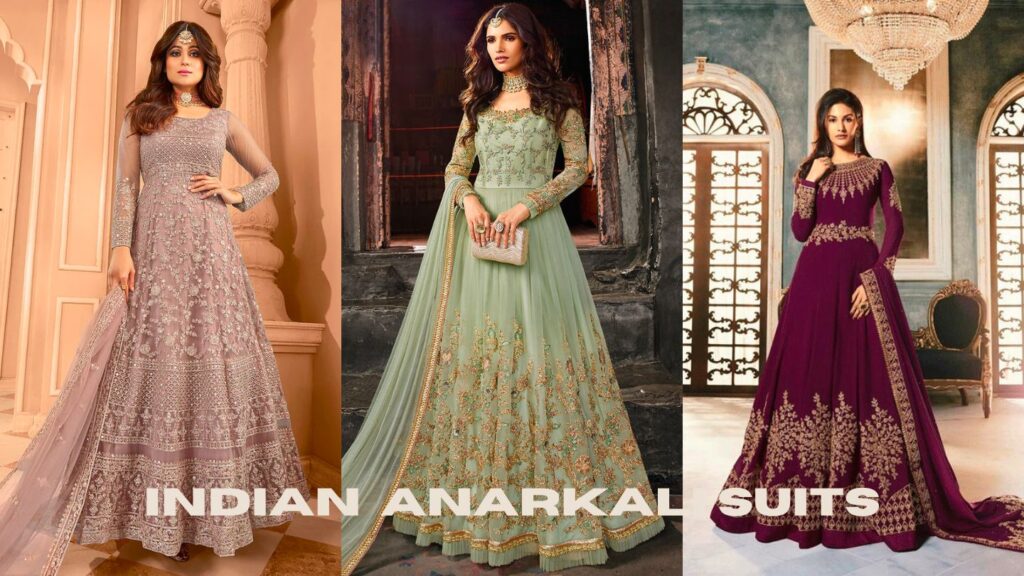
Anarkali suits trace their origin back to the Mughal era and have experienced a resurgence in recent years. These suits feature a long, flowing kurta with a fitted bodice and flared skirt, reminiscent of the legendary courtesan Anarkali’s style. Anarkali suits are favoured for their regal charm and timeless appeal.
Kurtis and Tunics
ALSO READ : Types of Kurtis and How to Choose the Neck Design for kurtis and Your Outfit
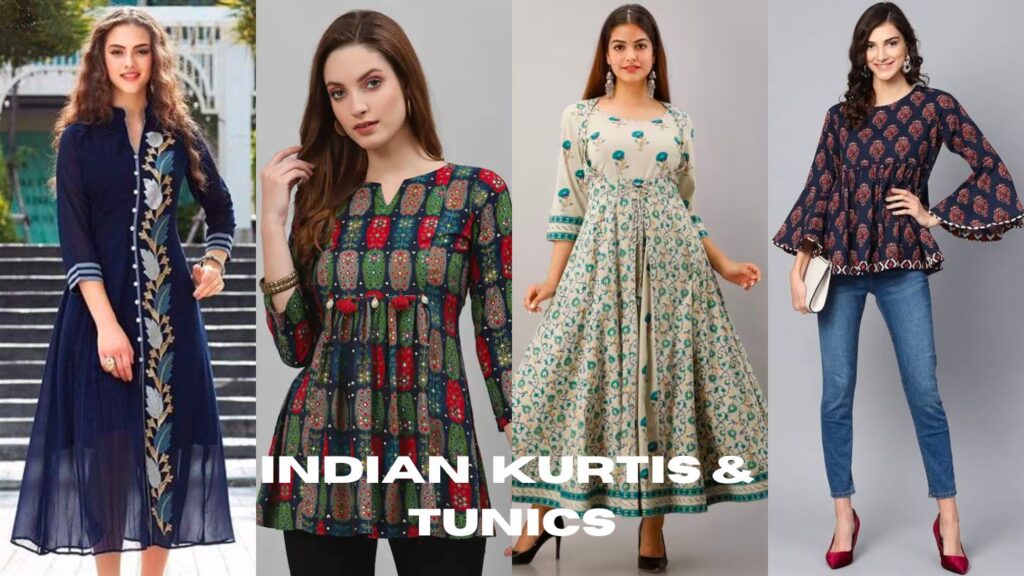
In the vibrant realm of contemporary Indian fashion, Kurtis and tunics stand out as indispensable wardrobe essentials. They seamlessly marry comfort with elegance, making them ideal attire choices for a spectrum of occasions ranging from laid-back gatherings to semi-formal affairs. Kurtis boast a kaleidoscope of designs, spanning from the classic straight-cut to the chic A-line and the avant-garde asymmetric styles, ensuring there’s something to cater to every discerning taste and preference.
Sherwani and Achkan
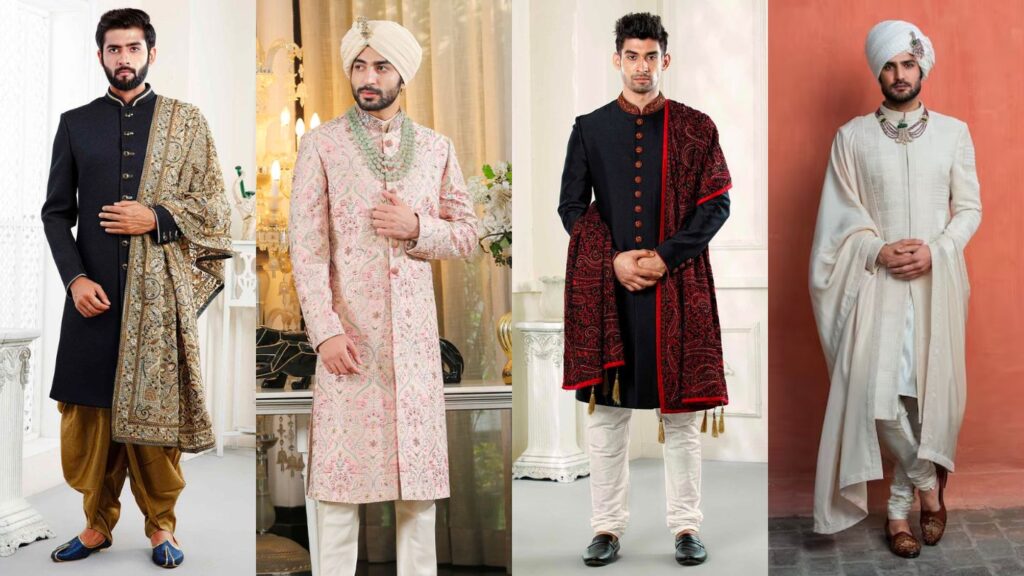
Sherwani and Achkan are traditional Indian attire for men, characterised by their long, tailored coats adorned with intricate embroidery and embellishments. These outfits are commonly worn during weddings, festivals, and formal gatherings, exuding elegance and sophistication.
Dhoti Kurta
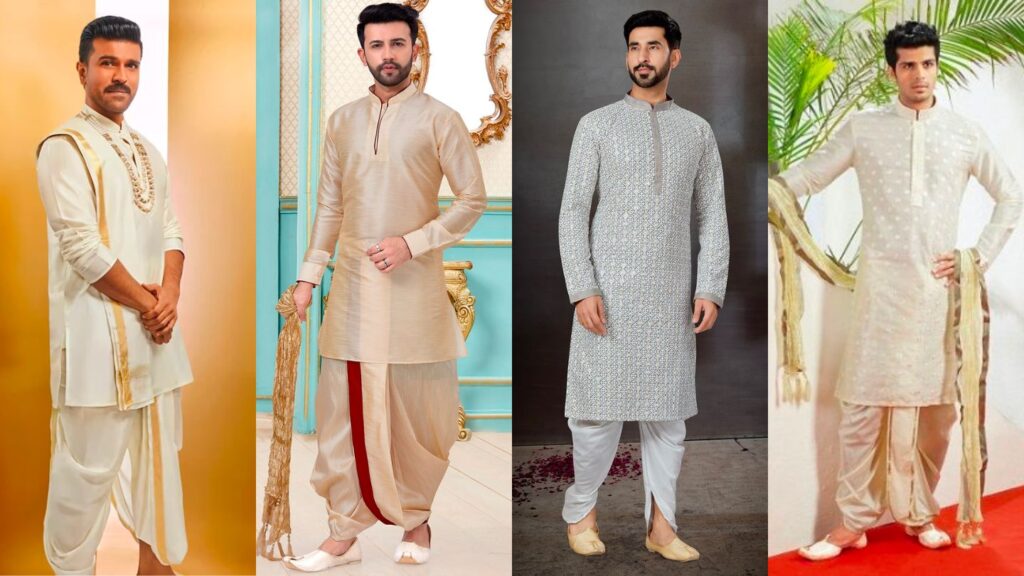
In South India, men commonly wear a traditional outfit called Dhoti Kurta. This attire consists of a long tunic (kurta) worn with a wrapped garment (dhoti). Dhoti kurta is favoured for its simplicity, comfort, and embodies traditional charm, making it a cultural symbol in the region.
Bandhgala Jackets
ALSO READ : Unravelling the Charm of Pathani Attires: A Complete Guide
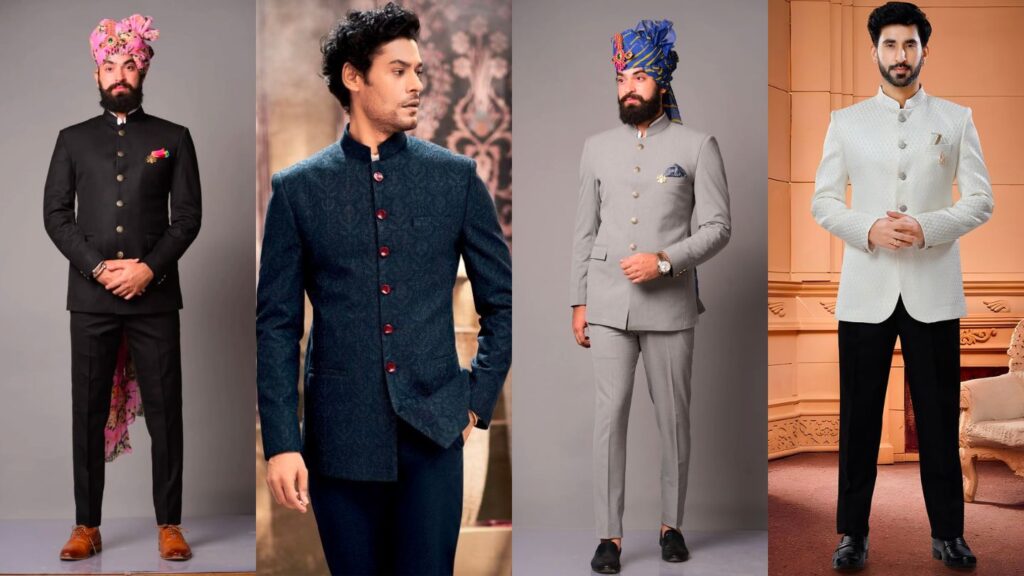
Nehru jackets, alternatively referred to as Bandhgala jackets, epitomise the enduring charm of Indian men’s fashion. Emerging from the vibrant tapestry of Jodhpur’s cultural landscape, these jackets boast a distinctive high neck, snug collar, and impeccably tailored form. Renowned for their regal allure, Nehru jackets exude sophistication, making them a favoured ensemble for grand occasions and matrimonial celebrations, where they infuse an aura of majestic refinement into the wearer’s attire.
Patiala Suit
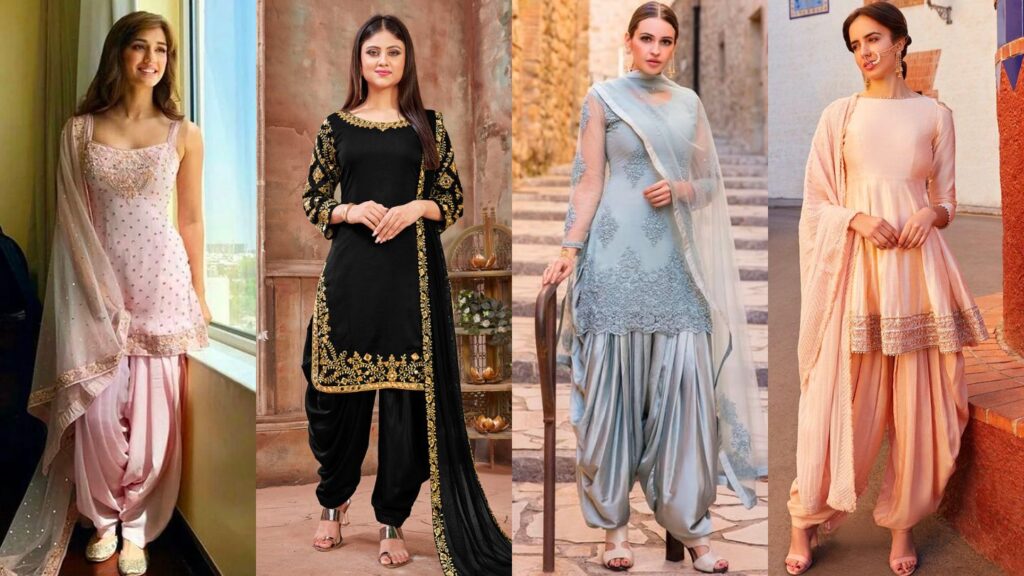
The Patiala Suit finds its roots in Punjab and is celebrated for its vibrant colours, voluminous pleats, and intricate embroidery. It comprises a long tunic (kameez), paired with a heavily pleated loose-fitting trouser (patiala) and a dupatta. Patiala suits are synonymous with Punjabi culture and are worn with pride during festive celebrations.
Indo-Western Fusion Dresses
Indo-Western fusion dresses have gained popularity for their contemporary appeal and cross-cultural influences. These outfits combine elements of Indian and Western fashion, resulting in unique and innovative designs. Indo-Western dresses offer a modern twist to traditional attire, catering to the evolving tastes of fashion enthusiasts.
Traditional Embroidery and Embellishments
Indian dresses are renowned for their intricate embroidery and embellishments, which showcase the skill and craftsmanship of artisans. From delicate zari work to intricate thread embroidery, each garment is a masterpiece of artistry and precision. Traditional motifs and patterns hold cultural significance, reflecting India’s rich heritage and craftsmanship traditions.
Fabrics Used in Indian Dresses
In the realm of Indian attire, garments emerge from a myriad of fabrics, carefully curated for their tactile sensation, graceful fall, and profound cultural connotations. Silk, cotton, chiffon, georgette, and brocade stand as stalwarts in the vibrant tapestry of Indian fashion. The selection of fabric frequently mirrors the essence of the event, the atmospheric conditions, and the idiosyncratic tastes of the individual wearer.
Styling Tips and Fashion Accessories
Styling Indian dresses involves coordinating complementary accessories such as jewellery, footwear, hairstyles, and makeup. From statement necklaces to intricately designed bangles, the right accessories can elevate a simple outfit to a stunning ensemble. Matching footwear and hairstyles add the perfect finishing touch, enhancing the overall look and appeal.
In conclusion, the diverse landscape of Indian dresses reflects the country’s rich cultural tapestry and heritage. From the timeless elegance of sarees to the regal charm of sherwanis, each garment embodies the essence of Indian tradition and craftsmanship. As fashion continues to evolve, Indian dresses remain a symbol of grace, beauty, and timeless elegance.



